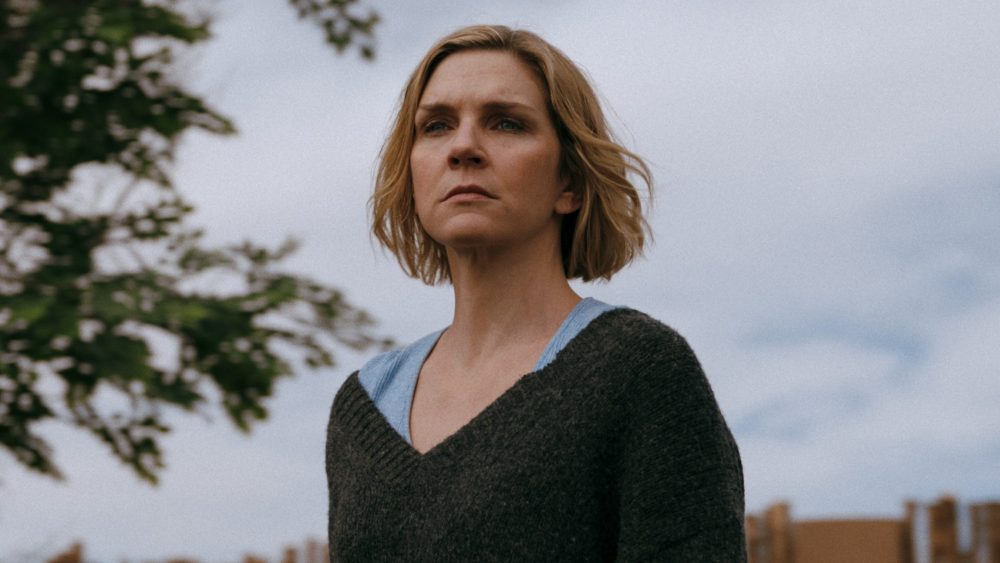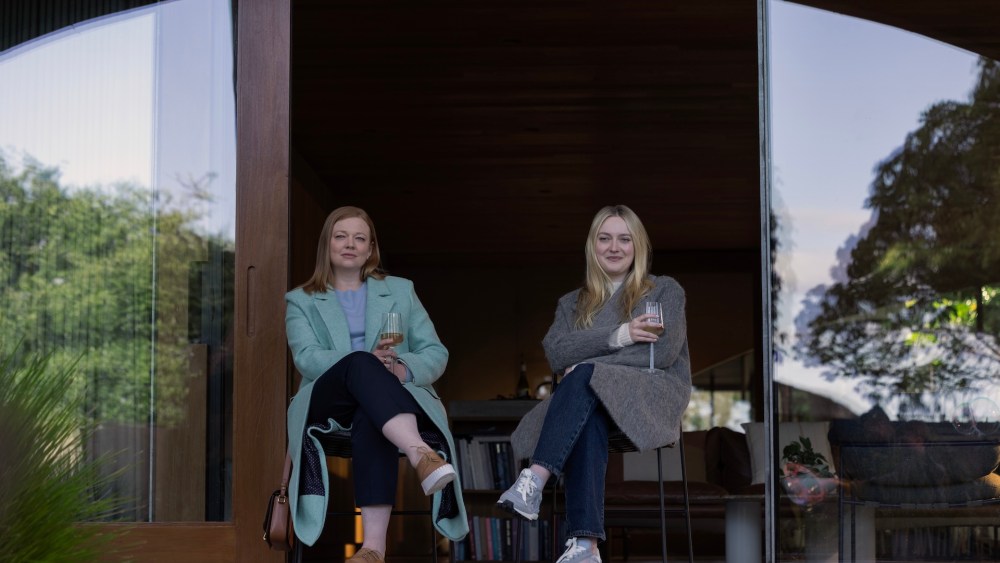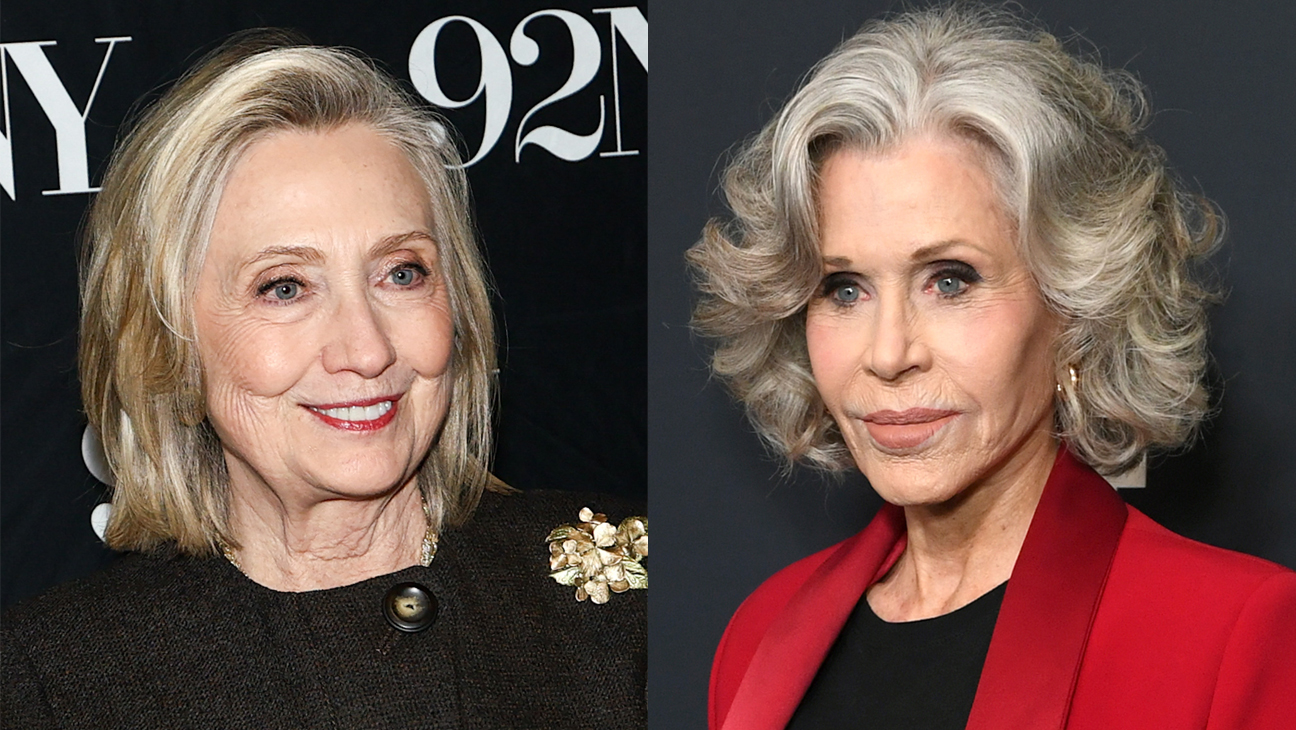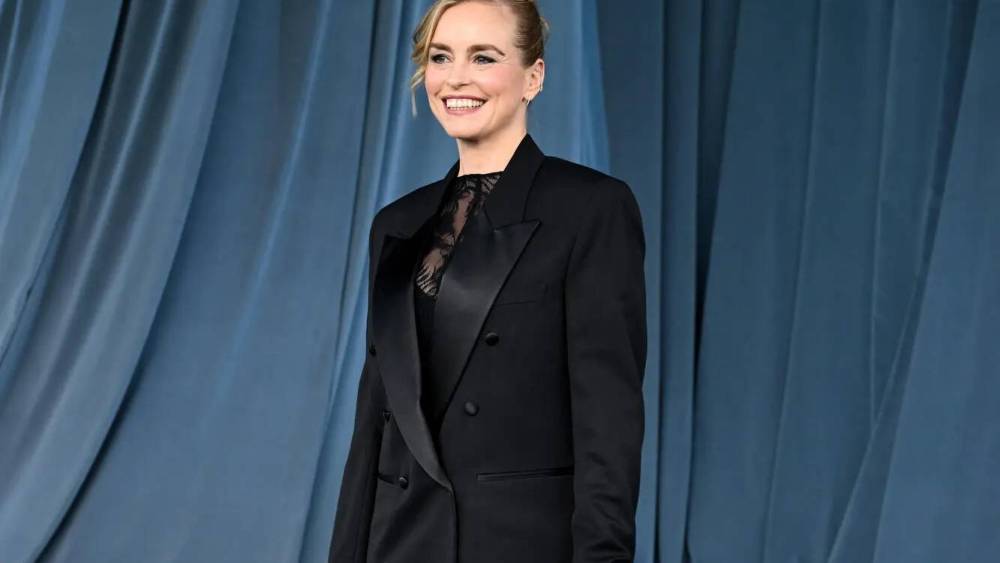‘Pluribus’ Explained by Vince Gilligan and Rhea Seehorn
SPOILER ALERT: This story contains spoilers for the first two episodes of “Pluribus,” streaming now on Apple TV.
Vince Gilligan is in the library at Variety’s New York office, surrounded by tens of thousands of newspaper and magazine archives dating back to 1905. He’s reading from a thick, brown book stamped JANUARY 2008, wherein lies this publication’s first review of “Breaking Bad.”
“Vince Gilligan brings a quirky sensibility to the pilot, and the show grows increasingly rich and absorbing in the second and third hours,” he recites. “Whether ‘Breaking Bad’ can ignite to become more than TV’s version of a little-seen indie film, however, could be an elusive formula.”
Hovering over his shoulder, Rhea Seehorn bursts into laughter.
Not only did “Breaking Bad” earn four more seasons that cemented it as one of the greatest TV shows of all time, it also spawned the spinoff “Better Call Saul,” centering the original series’ comic relief character in a drama that, astonishingly, managed to build up to the chair-gripping heights of its predecessor. Together, these shows made Gilligan into the rare TV creator who can still demand blank-check trust from Hollywood. He cashed in on that trust with “Pluribus,” his ambitious, clearly high-budget, eagerly awaited new series. It arrived Nov. 7 on Apple TV with two episodes.
Seehorn, who played Kim Wexler on six seasons of “Better Call Saul,” is the star of “Pluribus,” an original sci-fi drama that has nothing to do with courtrooms or cartels, but is set in Gilligan’s familiar Albuquerque. The run-up to “Pluribus” has been highly secretive, with cryptic promotional materials and a long list of embargoed spoilers from Apple. Its comically vague logline reads: “The most miserable person on Earth must save the world from happiness.”
Rhea Seehorn in “Pluribus”
Apple TV
Now that the first two episodes are out, here is the basic rundown: A group of space watchers discover an alien signal 600 lightyears away that contains a recipe for an RNA sequence, prompting months of animal testing by researchers in hazmat suits. An accidental lab leak infects the scientists with a virus that compels them to kiss each other and contaminate petri dishes with saliva until the whole world is possessed in what’s referred to as “The Joining.” Well, all but 12 people who are mysteriously immune to this sickness, including Seehorn’s curmudgeonly, self-hating romantasy author Carol Sturka.
Carol is at a bar when the rest of the population, including her wife Helen, begins to twitch unconsciously. In a panic, she drives Helen to the hospital while the city goes up in flames, but it’s too late. Everyone has suddenly been reanimated into friendly zombies. “We just want to help, Carol,” the doctors and patients say in unison — and they mean it. Later, a White House official, speaking for “every person on Earth,” assures Carol through the television that this is not an alien invasion. It’s not exactly a virus, either, but rather “a psychic glue capable of binding us all together.” How does it all work? “We don’t know, exactly,” he says with a smile. “It just does.”
While the pandemic-esque opening of the show might give you trauma flashbacks to “Tiger King” and drive-by birthday parties, Gilligan says he came up with the idea for “Pluribus” years before COVID. In the throes of writing “Better Call Saul,” he would take 90-minute lunch breaks and meander around Toluca Lake, taking a mental vacation from the world of Saul Goodman.
“I started pondering this idea almost 10 years ago. It was originally about a guy, because I tend to think that way,” says Gilligan, who is dressed in a checkered blazer and clean shaven for the first time in years. He imagined a show that started with an Earth-shattering event, and in the aftermath, the entire population suddenly became “unfailingly nice” to the protagonist, “so much so that they basically give their lives for this guy.”
Eventually, as he continued thinking about “Pluribus” while barrelling toward the end of “Better Call Saul,” something clicked: the main role was Seehorn’s. He started writing the character specifically for her without telling her. “You just can’t take your eyes off her,” Gilligan says. “She’s got a wonderful charisma. And she can do anything — make you laugh, make you cry.” It’s no wonder Gilligan initially wrote Kim Wexler as a love interest who might not make it to Season 2 of “Saul,” until “Rhea made herself indispensable.” (She would also go on to earn two Emmy nominations for her performance.)

Bob Odenkirk and Rhea Seehorn in “Better Call Saul”
©AMC/courtesy Everett Collection / Everett Collection
In early 2022, as they were wrapping production on the final season of “Saul,” Gilligan told Seehorn he wrote something for her, but wasn’t ready to give her the script — or any details about it at all. “Whatever it is, yes, I want to do it,” Seehorn told him. Meanwhile, Gilligan was so terrified that she would be enticed by another project that he asked executive producer Melissa Bernstein to flag him if she heard anything about Seehorn taking another job.
A few months later, the whole gang shuttled to the Albuquerque Convention Center as the city unveiled statues of Walter White and Jesse Pinkman. Staring up at the iconic drug slingers immortalized in bronze, just two weeks before the “Saul” series finale would air, Seehorn began thinking about Gilligan’s mysterious script.
“I didn’t want to bring it up and put him in a corner, but every day I was going, ‘Is this real?’” she recalls. As they walked back to the car, Gilligan pulled her aside and, as if reading her mind, said, “I didn’t forget about the script.”
He finally sent it when Seehorn was on vacation with her family, at an adult camp in New Hampshire with spotty cell service. “You had to crouch in the corner of a room or climb a tree and get an antenna with oil on it to get internet,” Seehorn says with a laugh. She was such a “nervous wreck” that she made her husband read it first, studying his face as he scrolled through the pages.
Sitting here today, Seehorn can’t quite describe why she was anxious. Gilligan has a suggestion: “What if it sucks?” Seehorn shoots him down with an “oh please” hand gesture. “I knew it was going to be great,” she says, spinning a Starbucks cup on the table. “It’s waiting for this thing you could not be more excited to start, but now it’s real.”

Rhea Seehorn and Vince Gilligan attend the world premiere of “Pluribus”
The Hollywood Reporter via Getty
Aside from co-creating the short-lived CBS dramedy “Battle Creek” in 2015, Gilligan had not ventured outside of his meth-and-death-ridden vision of New Mexico since 2008. And when he popped his head back into the Hollywood marketplace, he wasn’t sure if his new wacky, original idea would be welcome. “I wouldn’t say there was pressure, but there was a certain level of expectation,” he says. “A certain level of, ‘What’s next in the “Breaking Bad” world?’”
“We live in a world of IP, where the safest thing to do is reboot something that has an audience. I wanted to prove to myself I wasn’t a one-trick pony,” Gilligan says. “It’s harder than it’s ever been to get something made that’s not based on a previous movie or comic book or video game. Every generation deserves its own stories, instead of just the stories of their grandparents.”
Still, “Pluribus” ignited the first bidding war of Gilligan’s career, with several studios vying for the opportunity to bring his grinning apocalypse to life. It was a flattering, if not slightly uncomfortable affair for Gilligan. “I enjoyed that experience very much, but then in a weird way I didn’t,” he says. “It was great to be wanted, but I met with all these nice folks and I had to say no to some of them, and that was not enjoyable.” (They don’t call Gilligan the nicest showrunner in Hollywood for nothing.)
He went with Apple TV because they promised him the “two gifts of trust and time.” It didn’t hurt that the heads of the studio, Zack Van Amburg and Jamie Erlicht, were the same executives who greenlit “Breaking Bad” at Sony 18 years ago.

Rhea Seehorn and Vince Gilligan on the set of “Pluribus”
Courtesy of Apple
After spending a decade and a half in the brains of a meth kingpin and a slimeball attorney, Gilligan wanted his next protagonist to be a force for good. “I wrote on ‘The X Files’ for seven years, and I started to take for granted the idea of heroes. Mulder and Scully were heroic. They were trying to save the world. At a certain point, you do umpteen million episodes of that, and you think, ‘I’m ready for an antihero or a bad guy,’” Gilligan says. (He famously pitched “Breaking Bad” as the story of a man who transforms himself from Mr. Chips to Scarface.) “But at this point in humanity and in world history, I think we need more good guys again. We need more heroes.”
Not that Carol is a traditional TV hero, of course. As Seehorn puts it, she’s an “emotional hot mess” who “can’t control her anger”; Gilligan uses the words “reluctant” and “inept.” “The folks who rise to the occasion, despite the fact that they’re scared and lonely and sad and would rather have someone else take this mantle from them,” he adds, “those are the interesting characters to me.”
By the end of the first episode of “Pluribus,” it becomes clear that the “pluribus,” so to speak, wish to share their cult-like nirvana with the remaining 12 people on Earth. But for whatever reason, they cannot or will not force Carol to do anything against her will. In Episode 2, they send a butler-like representative, Zosia (Karolina Wydra), to help Carol with anything she might need, and to spit out press release-like explanations for why her wife is dead and individuality is all but gone. The pluribus share a neural network that has absorbed all human knowledge, which includes personal details about Carol’s life. They speak using the “royal we” and seem to be incapable of lying, as Zosia admits they are “months away” from figuring out how to recruit Carol into the collective consciousness.
Carol’s first big request is to meet with the handful of English-speaking survivors. She expects to form a coalition against the hive, but her fellow human beings are either delusional — one woman refuses to accept that her child is no longer her child but rather a mouthpiece for billions — or comfortable with their new reality. One man, who has claimed Air Force One as his private jet and surrounded himself with cheetah-print wearing supermodels, points out that in the New World, there is no crime and no racism. He asks Carol: “Why does the world need saving?”
“Carol is running around saying, ‘Are you guys aware the barn is on fire?’ and everyone’s like, ‘Can you just calm down and get a drink?’” Seehorn says. And so, with Carol intent on restoring what once was, the fate of mankind rests in the hands of someone who doesn’t seem to like people all that much.

Rhea Seehorn and Karolina Wydra in “Pluribus”
Apple TV
Might the show — with its army of all-knowing, obsequious entities consuming humanity — be a metaphor for the dangers of artificial intelligence?
With a half-amused shrug, Gilligan says he was not thinking about AI when he conceived of “Pluribus,” and he wrote it before the rise of large language models like ChatGPT. “One thing I did wrong while doing press for ‘Breaking Bad’ was tell people, ‘This is what this meant! This meant that!’” He remembers conversations with journalists and fans in which he drilled down his belief that his protagonist, Walter White, was, in fact, a villain. “I look back, and it was so tiresome,” Gilligan says. “Whatever people want to take away from this show is 100% up to them.”
Gilligan recalls writing for “Robert Homicide Division” in 2002 and asking Michael Mann, an executive producer on the CBS procedural, about the theme of his episode. “He looked at me for a minute, not in an unkind way, and was just puzzled,” Gilligan says. Mann responded to him: “Just tell a good story, let the audience figure out the theme. That’s their job.”
Regardless of whether his own feelings seeped into the show, Gilligan has been a vocal skeptic of artificial intelligence. Tucked away in the “Pluribus” credits, it reads, “This show was made by humans.” It’s an important reminder as Big Tech continues to infiltrate Hollywood, and the trillion-dollar companies behind shows like “Pluribus” are also driving the future of AI.
“I hate AI,” Gilligan says with a chuckle. “AI is the world’s most expensive and energy-intensive plagiarism machine. I think there’s a very high possibility that this is all a bunch of horseshit. It’s basically a bunch of centibillionaires whose greatest life goal is to become the world’s first trillionaires. I think they’re selling a bag of vapor.”
Gilligan isn’t afraid of artificial intelligence trouncing on the work of true artists — “My toaster oven isn’t suddenly Thomas Keller because it heats up a delicious pizza for me” — but his sci-fi brain buzzes at the looming threat of “the singularity,” or when AI develops “a true sentience that has its own soul, and therefore its own identity.”
“If they ever achieve that, then the whole discussion of slavery has to come back into the forefront of the conversation,” Gilligan says. “These trillionaires are going to want to make money on this thing that is now conscious. Is it then a slave? At that point, it is a truly sentient being, and these Silicon Valley assholes are going to monetize this against its own will, right?”
He pauses, and then remembers why we started talking about AI in the first place. “That’s the story I would write,” he says. “But that’s been done to death.”
Closer to home for Seehorn is the recent media flurry around an AI “actress,” Tilly Norwood, supposedly soliciting talent agencies. “I’m fine going on the record that I don’t think any agencies should represent that AI actress,” Seehorn says. “Shame on them!” (Many of the major agencies and guilds in Hollywood have since spoken out against the creation.)

Vince Gilligan and Rhea Seehorn behind the scenes of “Pluribus”
Courtesy of Apple
Meanwhile, video-generating software like OpenAI’s Sora showcase the inevitability that AI content will funnel into the mainstream. The question Gilligan has for audiences is: “Do you want to be fed a diet of crap? Is there enough calories in a diet of crap to keep you alive? The answer is yeah, probably. You could eat it.”
He goes on, about how AI-generated content is “like a cow chewing its cud — an endlessly regurgitated loop of nonsense,” and how the U.S. will fail to regulate the technology because of an arms race with China. He works himself up until he’s laughing again, proclaiming: “Thank you, Silicon Valley! Yet again, you’ve fucked up the world.”
He sounds like Carol Sturka, screaming about the barn on fire, before Seehorn offers a glimmer of optimism. Sure, you can prompt an AI to paint you a Picasso, but “even if a computer could make you think there was impasto brushwork there, the reason the painting is moving is because of the human experience that went into transferring that art onto the canvas,” she says. “That matters to me. I think it matters to most people.”
Apple gave “Pluribus” a two-season order, and Gilligan says he sees the series going beyond that. “I think we have a pretty good idea of where it should end,” he says, but that doesn’t mean he’ll stick to it. “One of the most important things I can do in the writers’ room is not be too precious about the ideas. If we come up with a better way to end this thing, we will.”
Of course, nothing is promised in today’s turbulent TV ecosystem, and there’s a chance “Pluribus” could turn out to be an expensive experiment that never quite catches on. Then again, given his track record, it’s more likely Gilligan and Seehorn will look back at this section of the archives two decades from now and share another laugh.
Share this content:




Publicar comentário